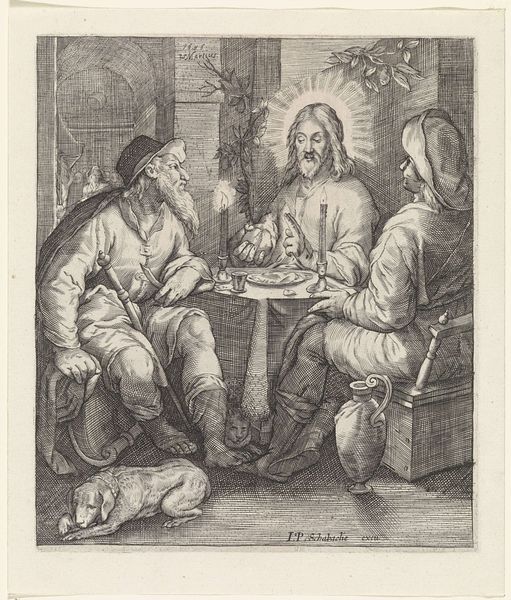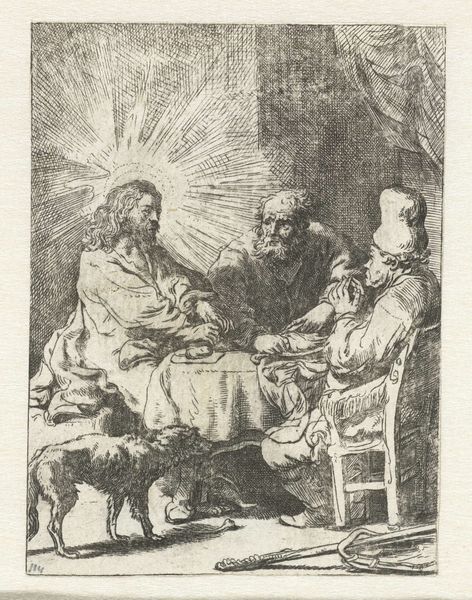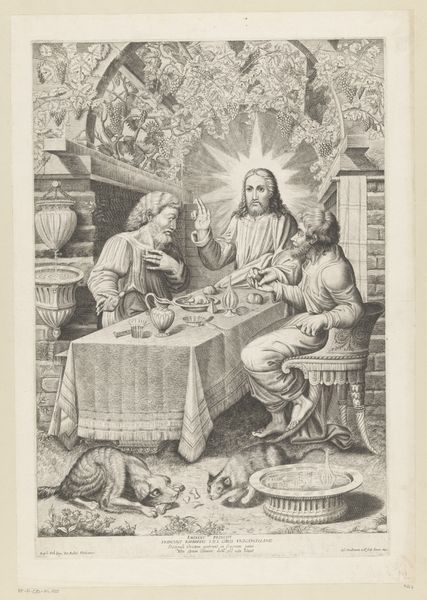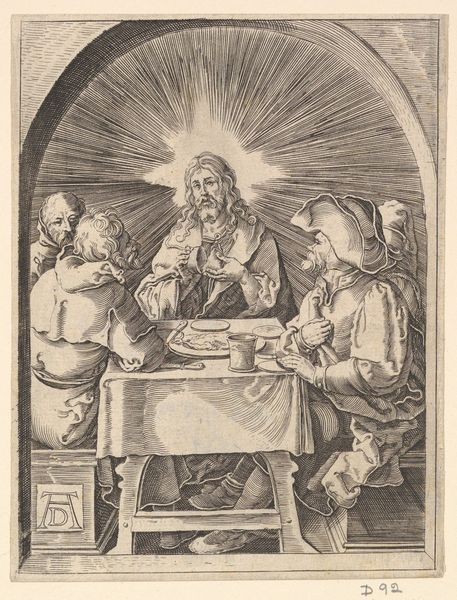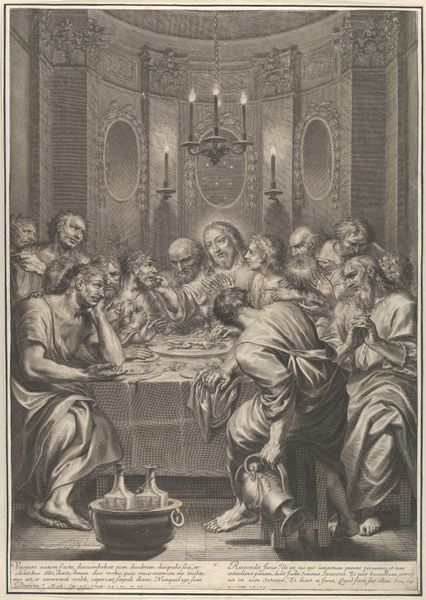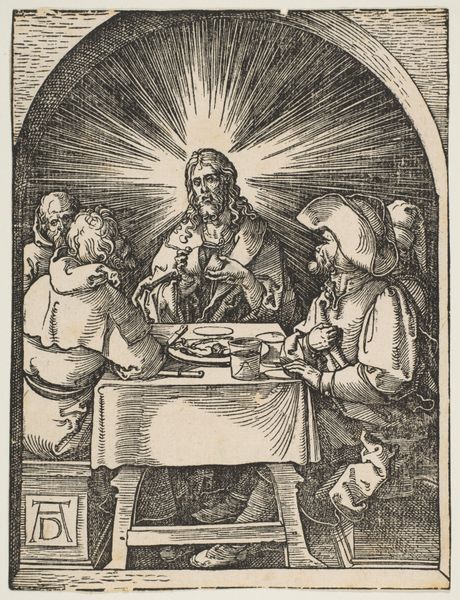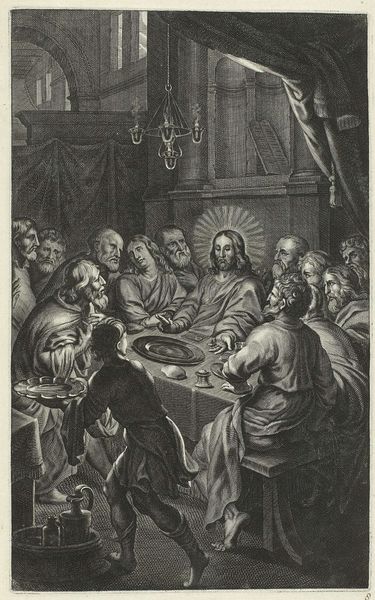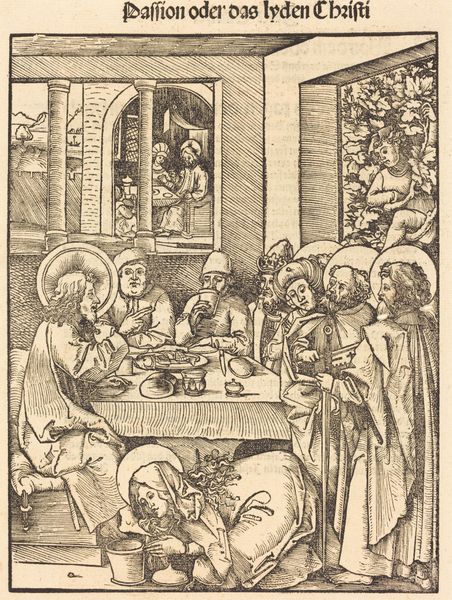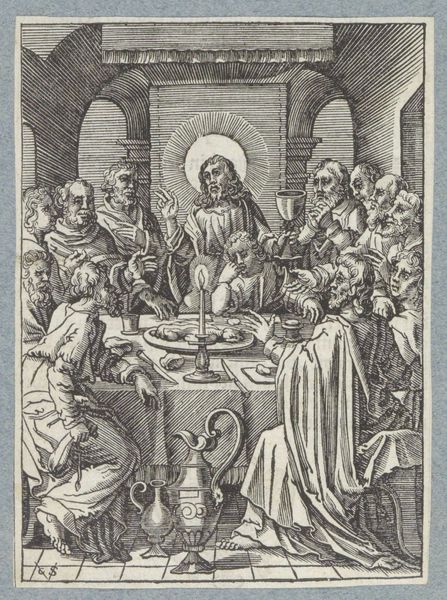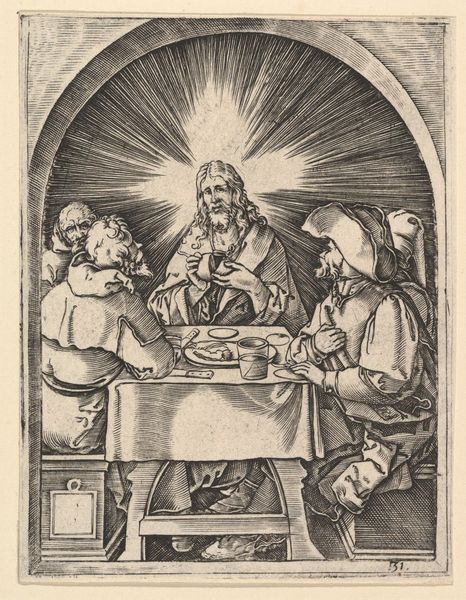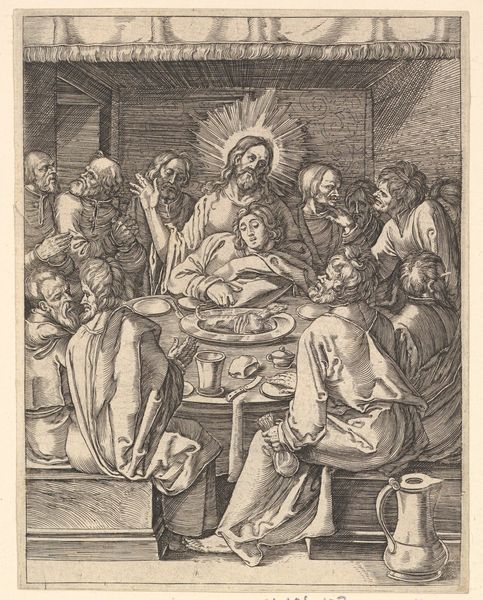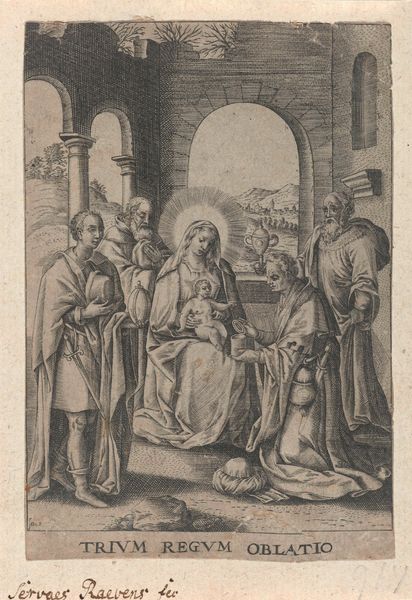
print, engraving
#
portrait
#
baroque
# print
#
old engraving style
#
portrait drawing
#
history-painting
#
engraving
Dimensions: height 269 mm, width 186 mm
Copyright: Rijks Museum: Open Domain
Curator: Here we have Jacob Matham’s engraving, "Maaltijd in Emmaüs," created sometime between 1604 and 1608. The engraving illustrates the biblical scene of the Meal at Emmaus, depicting the moment when the resurrected Jesus reveals himself to two disciples during a meal. What are your initial thoughts? Editor: It’s moody. I can already imagine a world of Caravaggio-esque chiaroscuro. The dog, sprawled out so casually in the foreground, kind of steals the show. There's a domestic feel to the religious story here. Curator: That's perceptive. Matham’s decision to portray the scene with an emphasis on the expressions and reactions of the figures contributes to the painting's sense of drama. The disciples, after not recognizing Jesus, react with astonishment and wonder at his sudden revelation. Matham’s precise lines define the figures and contribute to a heightened sense of realism. Did you notice how each crease, fold, and line in the garments seems meticulously rendered? Editor: Definitely. The textures, even the play of light across those faces, create a fascinating dynamic with the stark contrasts in tone typical of the Baroque style. However, I'm drawn to the narrative itself. The casual arrangement around the table humanizes this iconic religious event. Jesus isn't presented in an overtly divine or imposing manner. There's a relatable, human element—almost intimate. The fruit tree hanging in the background is a delightful inclusion, adding to this comfortable aesthetic. Curator: It enriches our interpretation, doesn’t it? Consider how the Baroque was used at this time, after the Council of Trent, to connect emotionally with the viewer. Matham uses visual devices to create the appropriate drama. It invites a deeper emotional connection. Editor: It's less about awe and reverence, and more about shared experience. The focus on that brief, poignant moment of recognition. This domestic setting, this humble meal, really drives that point home. What would you take away from Matham’s print today? Curator: Matham's work invites us to see beyond the sacred narrative and into a very human moment of recognition. It captures both the intimacy and the profundity inherent in this story. Editor: Agreed, a really interesting take that stays with you. The way it combines visual detail and narrative depth offers us much to consider.
Comments
No comments
Be the first to comment and join the conversation on the ultimate creative platform.
